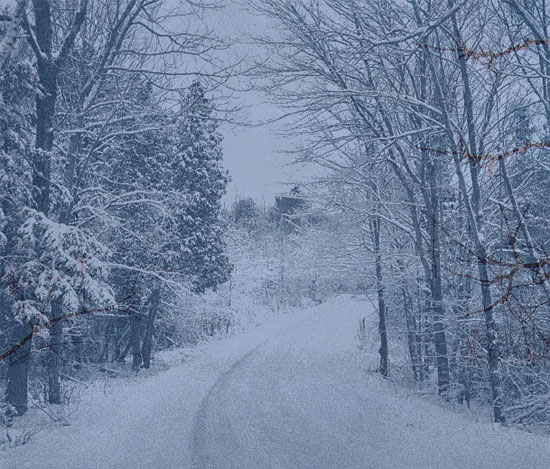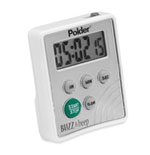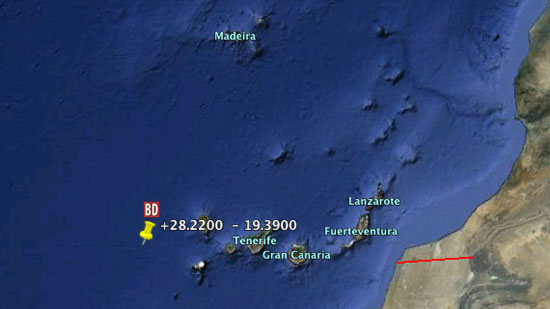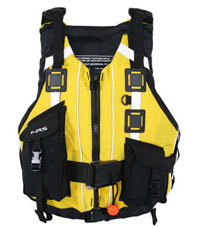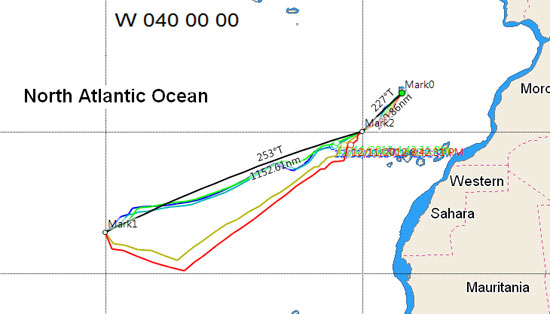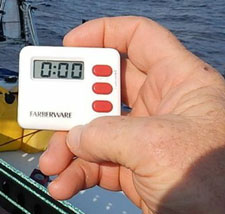Good Morning from Antigua!!
I arrived here about six hours ago, and have since had a shower and 5 hours of napping. You’d think it would be easy to just collapse and sleep for a week, but one of the more difficult things is breaking the ingrained 15 minute at-a-stretch sleeping pattern of the last 22 days!
Well, last night was another fun and exciting trip into an unknown harbor! My plan, once I got close enough to the harbor, was to sail back and forth through the night, waiting for first light of dawn to come into the unfamiliar surroundings. This is typically what a prudent seaman would do … but then again, maybe a prudent seaman wouldn’t leave Portugal in December bound for the U.S. with only himself onboard. Anyway, the last few days of sailing have just been exceptional. Winds up in the 20’s and great waves for surfing, which kept us moving at averages of more that 10 knots … with short bursts of speed up to 18 knots! As those conditions continued last night, it seemed that just a few hours after the sunset, I was seeing the lights of Antigua … and in fact, I was!
Once I got close to the harbor, I realized that until you actually ventured into the cut between the mountains of the island, there would be no sheltering from the wind. With the wind blowing 22 knots and seas rolling along at 3-4 meters, bumming around outside the harbor for 5 or 6 hours didn’t seem like a very pleasant or relaxing way to spend the night. So, I gathered up the notes that various people had emailed me on details of the harbor, and I hatched a plan. Since my initial itinerary was to head to Charleston, SC, I hadn’t put any charts of the Caribbean onboard the boat, and they weren’t included in the electronic chart information I had purchased for the navigation system. I was fully prepared for every other harbor in North America, the northern half of South America and ALL of Europe – but no Caribbean! All I had to work with were the emailed descriptions and a single very blocky geometrically shaped representation of the island.
So, I plugged some waypoints into the GPS and headed in towards harbor. The AIS (Automatic Identification System) indicated a large cluster of boats inland, so I figured there must be a harbor around them! Inching along at 1.5 knots, the wind eventually subsided and the choppy seas went away, which left me with this incessant alarm on my electronic GPS plotter, warning me of a “dangerous AIS vessel” close by. While annoying, it was still comforting to know that I was near the harbor. After a while, I realized why I had stopped seeing the harbor lights. There was this larger ship moving right in front of me! You’d think I’d have seen something that big, but in the view of harbor, land and boat lights, until you identify specific points of light on land being covered and uncovered, ships with all sorts of crazy lights on them can easily camouflage the shore lights – and this one was doing a perfect job of blocking my view of the harbor. Arrgh … no wonder my AIS was sounding its alarm … this hulk was just 100 yards ahead of me, and I’m going twice as fast as it is! Thankfully, we’re talking only 1 to 2 knots here!
All in all the presence of the other boat was a comfort, because its being there, meant we were in deep water – and I was right behind it. Before long, I found the first of the channel lights, which began to guide me right to the main dock at the Antigua Yacht Club. So, I rounded up my fenders and dock lines, and soon enough I was secured to the dock in Antigua! A few moments to take a breath and shrug off the tensions, kick off my dock shoes and grab that last can of Coke I’d been saving for the occasion. Then I stepped ashore … and was filled with this amazingly proud feeling. I’d just solo sailed across the Atlantic! This had been one of the very earliest goals of my life … one I can now take off the list. What a sweet feeling to be experiencing … under a bright full moon and a sky full of stars, there on the docks of Antigua.
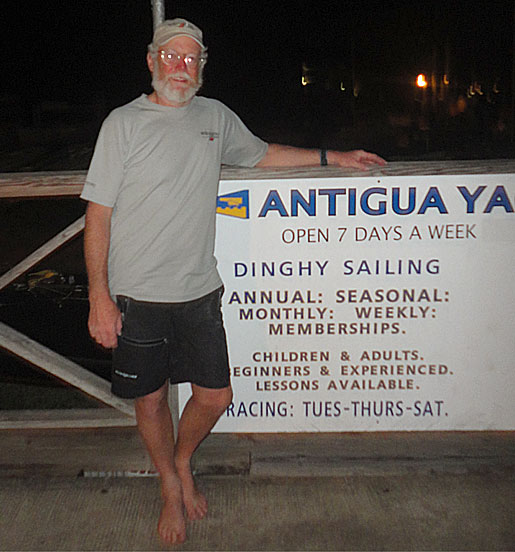
Here’s a pic of what a guy looks like after 22 days at sea. Not too bad huh?
A few moments later, a security guard guided me to the showers and within an hour, I had washed off the first layers of 22 days at sea, and was horizontal in my bunk for a nap.
So many thanks to everyone for following along on the journey – and thanks to the mysterious mother ship that guided me in last night. I think the awareness of that ship, in and of itself, reduced my blood pressure by half! Now, to work on any other remaining blood pressure issues. But from what I can tell though, Antigua looks like the perfect place to find an easy spot to relax for a few days.
More coming soon, once I find land-based Internet … and oh yeah, some great photos too!
– Dave


